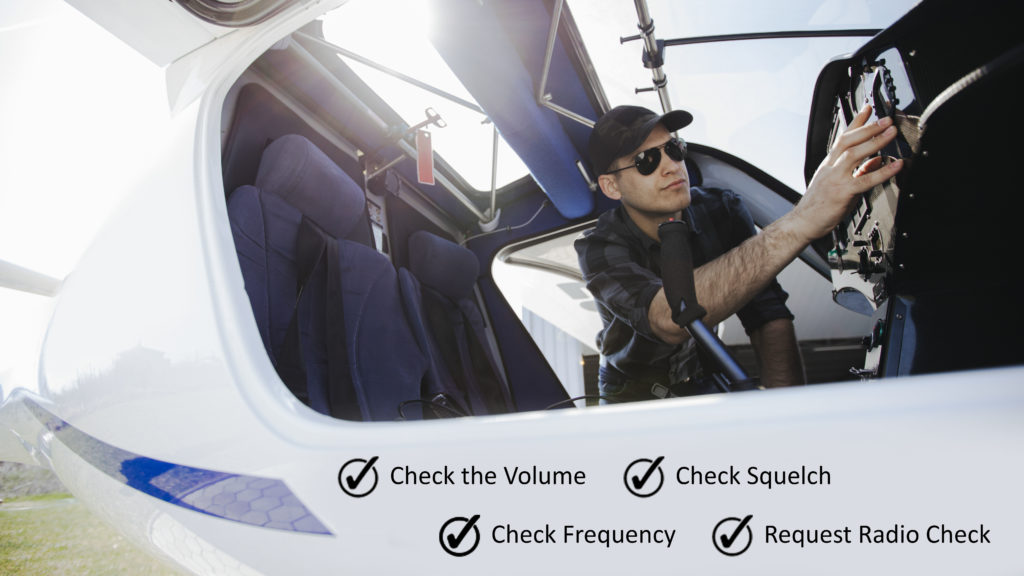Welcome to Week 1 of National Safety Month 2025
Proudly Sponsored by:
If you are serious about flying then you are probably serious about your gear too. If this attitude sounds familiar then FLYTE sunglasses are made for you.
FLYTE sunglasses are engineered for those who demand performance, starting with the same material that is used to build airplanes – carbon fibre. It’s no secret that carbon fibre is strong, lightweight and durable, that’s why we use it.
Our carbon fibre arms are designed to work seamlessly with your headset, something important if you value noise cancelling. The composite material allows us to make super thin temples without sacrificing quality, it’s the perfect blend of innovation and style.
For the truly discerning pilot, try our VISOR which has a 100 percent carbon fibre frame, tough enough to handle any flight yet so light you will forget you are wearing them. And they come with same impact resistant lenses as our other styles with optical qualities that other brands envy.
Forget flimsy frames and heavy lenses. Our sunglasses are a testament to where modern materials and meticulous design meet, offering you an accessory that’s as resilient and ready for action as you are. They’re more than just eyewear, they are equipment. Step up to a new standard – one built for the skies, but perfect for anywhere you land.
Explore the range: https://www.flyte.aero/

Flight Phase: Pre-flight Planning
Planning for a successful flight, whether a local sortie from your home airfield or travelling to the vast array of places your recreational aircraft can take you, involves more than just packing the car with your headset and your phone.
There are many aspects to safe flight that can often be overlooked, especially if familiar with the area or the aircraft. In this week 1 of National Safety Month, we will take a close look at all the factors that contribute to making that next flight memorable – for all the right reasons!
Aviation history and accident investigations continue to show us that failing to plan, can easily lead an unintended plan to fail. It only takes one small element before we leave the ground that can ruin our day in some way.
⚠️ Remember there is nowhere to park up there to sort things out and no roadside assistance at 5000 feet.
What about me?
An aeroplane can take you just about anywhere, but only if you, the pilot, are fit and ready as well. Follow these quick links to make sure you’re up to speed on the most important part of the flight – YOU!
“IMSAFE” – The Pilot wellbeing check
The pilot wellbeing check has been around for a while now, and it’s often just too easy to just recall the mnemonic, say the words and rush out to the plane. But long before we drive to the airfield, we need to plan our flights from the most important element – YOU!
We can sometimes reason to ourselves that we are OK, both physically and mentally, but the airborne environment takes no prisoners. From suffering barotrauma from a head cold, a stressful week at work, or that night shift that went over time, these and many other factors can and will affect your performance in the air – no matter how much you want to fly.
Prepare your chariot
So, you are feeling great, and ready for some flying. The next crucial part is to prepare your aircraft and reassure its readiness. Sometimes things can be difficult to spot, and well, let’s be honest you’ve got to know the ol’ girl well; but this is your final chance to stop complacency putting a foot in the door.
Checking the paperwork
⚠️ Mind you – Aircraft logbooks and Maintenance records support not just our analyses into what went wrong but is crucial to prevent something from going wrong!
Do ensure you answer “YES” to the following questions, as part of assessment on aircraft records:
- Is the aircraft’s maintenance logbook up to date?
- Are the maintenance records in order?
Check out a sample Maintenance Release (MR) documentation by RAAus’ one of most valued FTS members. The document highlights:
- Purpose of an MR, and
- Responsibilities of both Pilots and Maintainer in completing the records and reviewing them before and after each flight.
Having all the necessary paperwork on board ensures that your aircraft is legally and safely able to operate. It’s also a good practice to check these documents yourself, not just assume they are up to date.
✈️ If you are interrupted or miss an item, good practice is to start the procedure again?
The Pre-flight Inspection
A thorough pre-flight inspection is more than just a box to tick on a checklist. It’s your last line of defence. From checking for fuel contamination to inspecting control surfaces for free movement and security, every item is there for a reason. Don’t let familiarity lead to complacency.
The following video that RAAus created is still a valuable reference for things to be checked / steps to follow in your pre-flight inspection. Take a moment to listen to our expert!
Take a Closer Look!
Check out this article by a recreational pilot who has shared his first-hand experience of overlooking a small airworthiness item on the ground, and what it may cost you dearly in the air: Take a closer look.
“WEIGHT” just a Moment
The phrase “if it fits, it flies” is a myth.
Flying an aircraft with no regard for published weight and balance limits is extremely dangerous. An overloaded aircraft needs a much higher airspeed to take off and will have a significantly reduced climb performance. Even a seemingly small shift in the aircraft’s centre of gravity (CG) can dramatically compromise manoeuvrability and stability in flight.
💡 Consider:
- If your CG is too far aft, the aircraft may pitch up prematurely on take-off or become difficult to control during landing flare.
- If it’s too far forward, you may struggle to rotate for take-off.
- The first time you’ll find out if it’s wrong is as you become airborne
Always remember to check your aircraft’s weight and balance to ensure a safe and predictable flight.
For a great read on this topic, check out the CASA Safety Topic on Weight and Balance.
Weather to go?
Most things in our flying are within our control, but weather is not one of them. That’s why it’s important to study the correct weather information, specifically for pilots, and know how to interpret it to ensure a safe flight.
Obtaining the Correct Weather
👉 Weather isn’t just about a single forecast; it’s about SEEING THE BIG PICTURE.
That means understanding how all the different resources—from GAF’s and TAF’s to Grid Point wind charts and satellite imagery—come together to tell a story about your flight. By seeing how all the pieces of the puzzle fit, you can make smarter decisions and anticipate what the sky might have in store for you.
Do you know the legal resources to obtain official forecasts?
Either a Graphical Area Forecast (GAF) or Graphical Area Meteorology Forecast (GAMET) and the Grid Point Wind and Temperature (GPWT) reports for all sectors you intend to fly. These must be reviewed and updated if sought more than 1 hour before flights (CASR 91.230).
To help you master this, RAAus have put together a self explanatory presentation that walks you through how to use these different resources to paint a clear picture of the weather for your next flight.
💡For the full rundown, make sure you open our RAAus Weather Planning Presentation.
Make sure you ‘UNDERSTAND’ the codes
Weather reports like METARs and TAFs use a specific language of codes to convey a lot of information in a concise format. Knowing what each code means is critical. For instance, being able to quickly interpret “BKN020” as “broken clouds at 2,000 feet” could make the difference between a safe flight and one that ends in an uncomfortable situation.
 How do you decide when to ‘go’ and when to ‘no go’ based on a tricky weather forecast?
How do you decide when to ‘go’ and when to ‘no go’ based on a tricky weather forecast? Even weather can affect the shortest of flights
The Real Cost of Ignoring the Weather: A Pilot’s Story: Lessons learnt the hard way.

Is there anybody out there?
When you take to the skies, you’re not just flying your aircraft; you’re entering a dynamic, shared environment. The national airspace is a complex system of procedures, boundaries, and most importantly, other pilots and air traffic services. Before you even start your engine, it’s critical to have a clear picture of what’s happening in that environment. This isn’t just about being a good neighbour in the sky—it’s a fundamental safety practice that can prevent mid-air collisions, airspace incursions, and other incidents.
A pilot’s most powerful tool for this is the pre-flight briefing, which helps you gather key information from official sources. This includes studying NOTAMs (Notices to Airmen) to learn about temporary changes and hazards and checking your comms to ensure you can communicate effectively with others. Being informed and prepared makes you a predictable and safe participant in the airspace, ensuring a smoother journey for everyone.
Do your HOMEWORK!
NOTAMs are essential for staying informed about temporary hazards and changes to the national airspace system. They cover everything from runway closures and taxiway blockages to Temporary Restricted Areas (TRA’s) and military exercises. Skipping a NOTAM brief is like driving into an unfamiliar city without looking at a map—you might get lucky, but you’re more likely to run into unexpected problems.
The sky is a shared space, and some areas—like military restricted airspace—are off-limits for a reason. These aren’t just invisible boundaries; they’re critical zones for national security and military training. Flying into the unknown without a proper check of NOTAMs can have serious consequences.
👉 To truly understand why a few minutes of planning can save you from a major incident, check out CASA’s ‘Out n’ Back’ episode on NOTAMs and military airspace.
Checking your Comms
“Your radio is your lifeline to the world”
A quick pre-flight radio check ensures you can transmit and receive clearly.
- Can you hear the local ATIS or other aircraft on the frequency?
- Is your squelch set?
These small checks ensure you are a known and predictable factor in the airspace, and that you can communicate when the need arises.

Am I competent and current to fly?
To cap off our discussion on pre-flight planning, RAAus has developed a simple yet powerful tool to help you assess your readiness to fly: the Pilot Currency Barometer. It’s a quick way to check your experience against your recency, pulling together all the elements of self-assessment, flight planning, and knowledge we’ve discussed so far.
👉 Check out RAAus “Pilot Currency Barometer” that provides a comprehensive overview of items to tick-off before you fly.
PARTICIPATE TO WIN!
YOU COULD WIN ONE OF THE FOLLOWING PRIZES*
FIRST PRIZE: iPad Mini 64GB + OzRunways Subscription
Sponsored by RAAus and OzRunways
Valued at $1,298
SECOND PRIZE: iPad Mini 64GB + OzRunways Subscription
Sponsored by RAAus and OzRunways
Valued at $1,298
THIRD, AND FOURTH PLACES: FLYTE Sunglasses
Sponsored by FLYTE
Valued at $245 each

*Applicants must hold a current Flying Membership or Non-Flying Membership in order to win the first prize.
*Terms and Conditions apply
